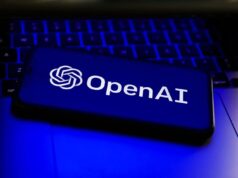
Artificial Intelligence (AI), once a figment of science fiction, is now interwoven into the fabric of our daily lives. From voice assistants like Siri and Alexa to recommendation algorithms on Netflix, AI has become ubiquitous, shaping the way we interact with technology and the world around us. But what exactly is AI development, and how does it lead to the creation of these intelligent applications?
At its core, AI development is the process of creating computer systems capable of performing tasks that typically require human intelligence. This involves a complex interplay of algorithms, data, and computational power, aimed at enabling machines to learn, reason, problem-solve, and even exhibit creativity. While the concept of AI has been around for decades, recent advancements in machine learning and deep learning have propelled the field to new heights, unlocking possibilities that were once deemed unimaginable.
The Building Blocks of Intelligent Applications
- Machine Learning: The Engine of AI
At the heart of AI development lies machine learning, a subset of AI that focuses on enabling machines to learn from data without being explicitly programmed. Through exposure to vast datasets, machine learning algorithms can identify patterns, make predictions, and improve their performance over time. This ability to learn from experience is what empowers AI systems to adapt to new situations and perform tasks that were previously thought to be the exclusive domain of humans.
- Deep Learning: Unraveling Complex Patterns
Deep learning, a specialized form of machine learning, takes inspiration from the human brain, utilizing artificial neural networks to model and process complex data. By layering multiple neural networks, deep learning algorithms can extract intricate patterns and representations from raw data, enabling them to tackle tasks such as image recognition, natural language understanding, and even game playing with remarkable accuracy.
- Natural Language Processing: Bridging the Communication Gap
Natural language processing (NLP) is a branch of AI that focuses on enabling machines to understand and interact with human language. From chatbots and virtual assistants to language translation and sentiment analysis, NLP plays a pivotal role in facilitating communication between humans and machines.
- Computer Vision: Seeing the World Through a Machine’s Eyes
Computer vision empowers machines to perceive and interpret visual information from the world around them. Through techniques such as image recognition, object detection, and facial recognition, computer vision enables AI systems to “see” and understand the visual world, opening up a plethora of applications in fields like healthcare, autonomous vehicles, and security.
- Robotics: Bringing AI to the Physical World
Robotics combines AI with mechanical engineering to create intelligent machines capable of interacting with and navigating the physical world. From industrial robots performing repetitive tasks on assembly lines to humanoid robots assisting in healthcare and customer service, robotics is pushing the boundaries of what AI can achieve in the real world.
My Personal Journey with AI Development
My fascination with AI began during my undergraduate studies in computer science, where I was captivated by the potential of machines to learn and reason. Since then, I’ve had the opportunity to work on various AI projects, from developing machine learning models for fraud detection to building chatbots for customer service. Witnessing firsthand the transformative power of AI has been both exhilarating and humbling, and I’m constantly amazed by the new breakthroughs and applications emerging in this field.
Key Considerations in AI Development
- Data: The quality and quantity of data are paramount in AI development. Machine learning algorithms rely on vast datasets to learn and generalize, and the availability of relevant, high-quality data can significantly impact the performance of AI systems.
- Algorithms: Choosing the right algorithms is crucial in AI development. Different algorithms are suited for different tasks, and selecting the appropriate algorithm can make all the difference in achieving optimal results.
- Computational Power: AI development is computationally intensive, requiring powerful hardware and software resources. Access to adequate computing power is essential for training and deploying AI models, especially for complex tasks like deep learning.
- Ethics: As AI becomes increasingly pervasive, ethical considerations are paramount. Ensuring that AI systems are fair, transparent, and accountable is crucial to building trust and preventing unintended consequences.
The Future of AI Development
The future of AI development is brimming with possibilities. As advancements in machine learning, deep learning, and other AI technologies continue to unfold, we can expect to see even more intelligent and capable applications emerge. From personalized medicine and smart cities to autonomous vehicles and creative AI, the potential impact of AI on our lives is immense.










